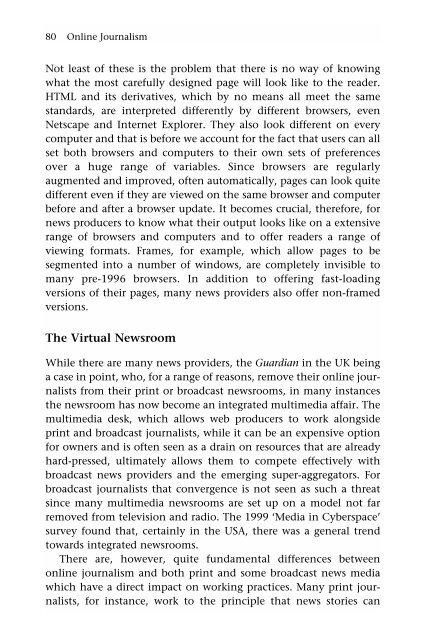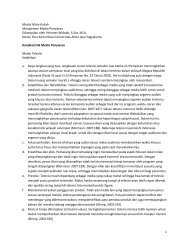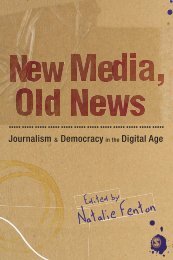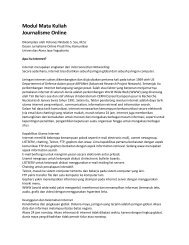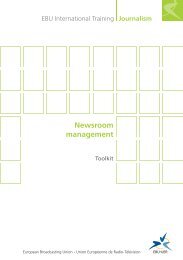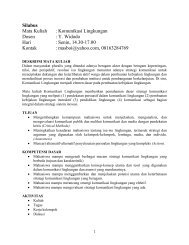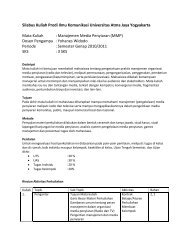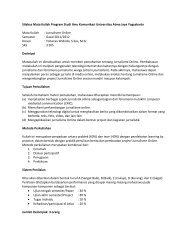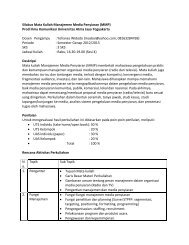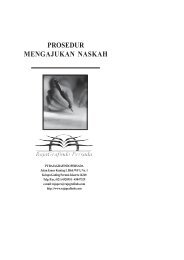Online Journalism - Ayo Menulis FISIP UAJY
Online Journalism - Ayo Menulis FISIP UAJY
Online Journalism - Ayo Menulis FISIP UAJY
You also want an ePaper? Increase the reach of your titles
YUMPU automatically turns print PDFs into web optimized ePapers that Google loves.
80 <strong>Online</strong> <strong>Journalism</strong><br />
Not least of these is the problem that there is no way of knowing<br />
what the most carefully designed page will look like to the reader.<br />
HTML and its derivatives, which by no means all meet the same<br />
standards, are interpreted differently by different browsers, even<br />
Netscape and Internet Explorer. They also look different on every<br />
computer and that is before we account for the fact that users can all<br />
set both browsers and computers to their own sets of preferences<br />
over a huge range of variables. Since browsers are regularly<br />
augmented and improved, often automatically, pages can look quite<br />
different even if they are viewed on the same browser and computer<br />
before and after a browser update. It becomes crucial, therefore, for<br />
news producers to know what their output looks like on a extensive<br />
range of browsers and computers and to offer readers a range of<br />
viewing formats. Frames, for example, which allow pages to be<br />
segmented into a number of windows, are completely invisible to<br />
many pre-1996 browsers. In addition to offering fast-loading<br />
versions of their pages, many news providers also offer non-framed<br />
versions.<br />
The Virtual Newsroom<br />
While there are many news providers, the Guardian in the UK being<br />
a case in point, who, for a range of reasons, remove their online journalists<br />
from their print or broadcast newsrooms, in many instances<br />
the newsroom has now become an integrated multimedia affair. The<br />
multimedia desk, which allows web producers to work alongside<br />
print and broadcast journalists, while it can be an expensive option<br />
for owners and is often seen as a drain on resources that are already<br />
hard-pressed, ultimately allows them to compete effectively with<br />
broadcast news providers and the emerging super-aggregators. For<br />
broadcast journalists that convergence is not seen as such a threat<br />
since many multimedia newsrooms are set up on a model not far<br />
removed from television and radio. The 1999 ‘Media in Cyberspace’<br />
survey found that, certainly in the USA, there was a general trend<br />
towards integrated newsrooms.<br />
There are, however, quite fundamental differences between<br />
online journalism and both print and some broadcast news media<br />
which have a direct impact on working practices. Many print journalists,<br />
for instance, work to the principle that news stories can


